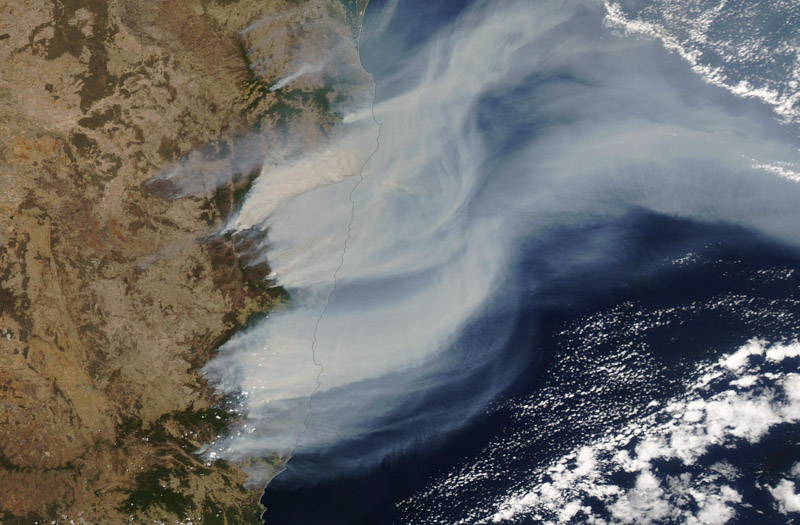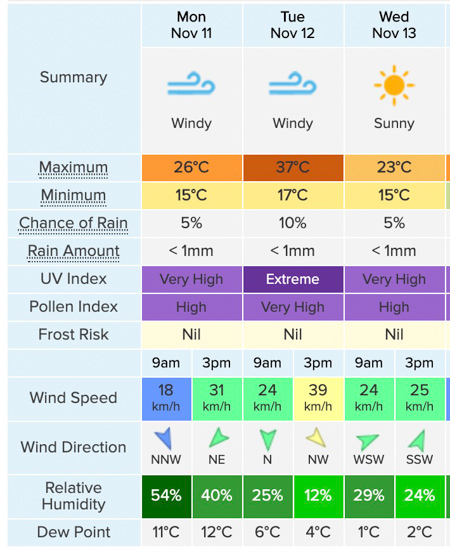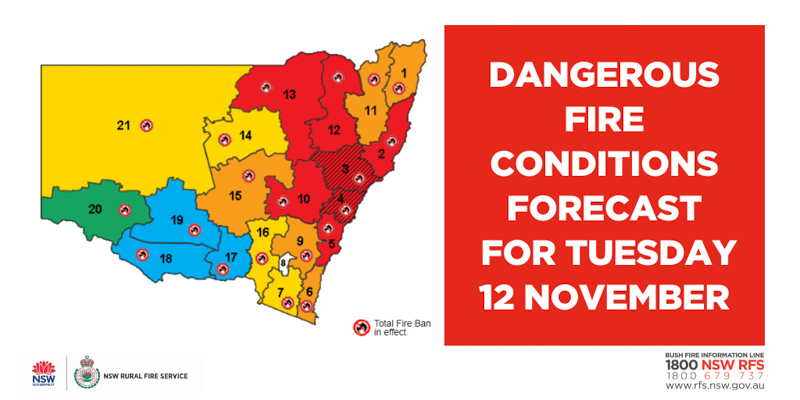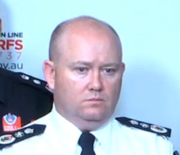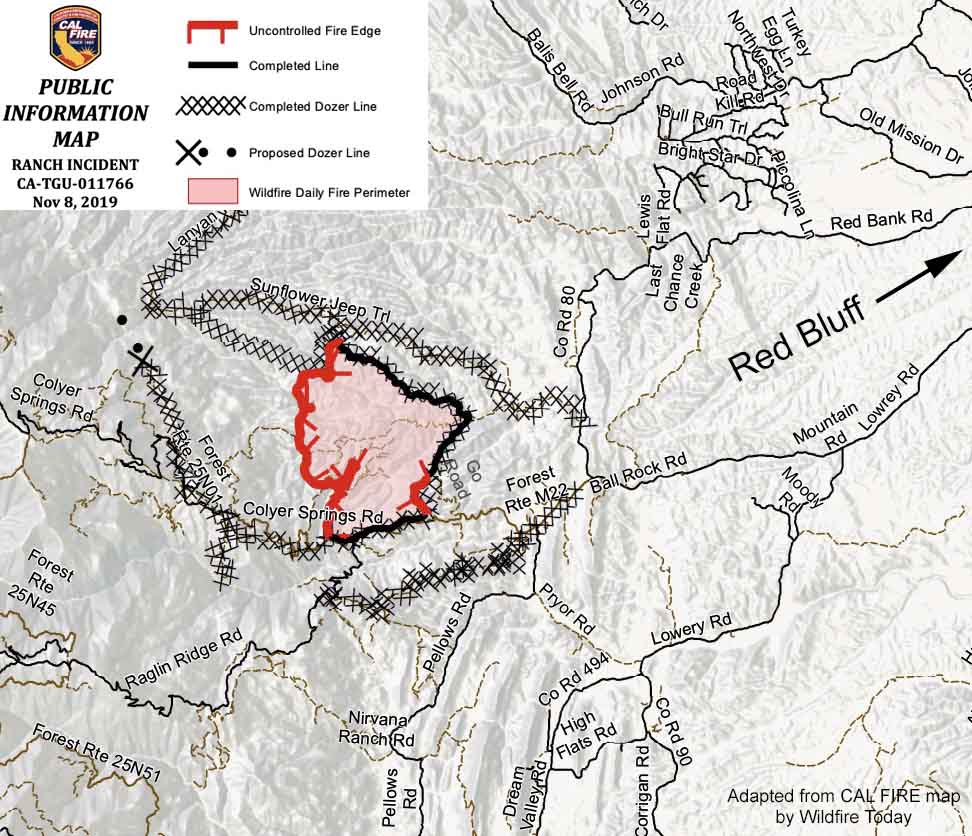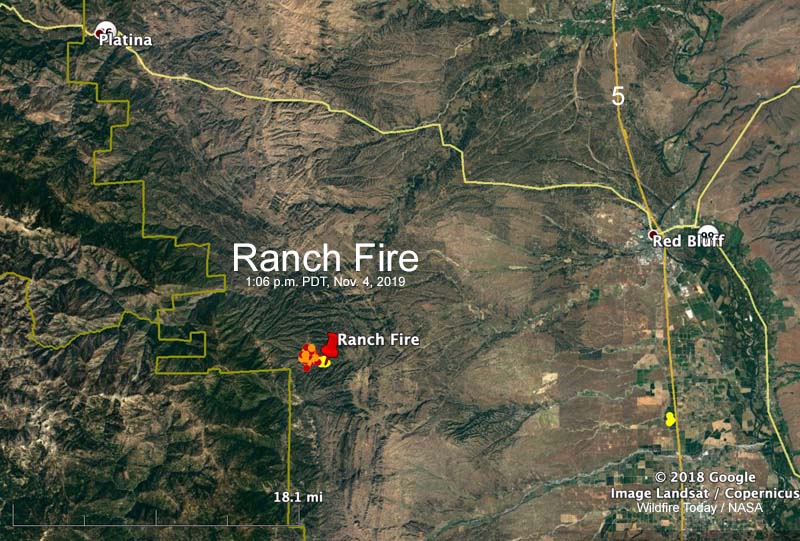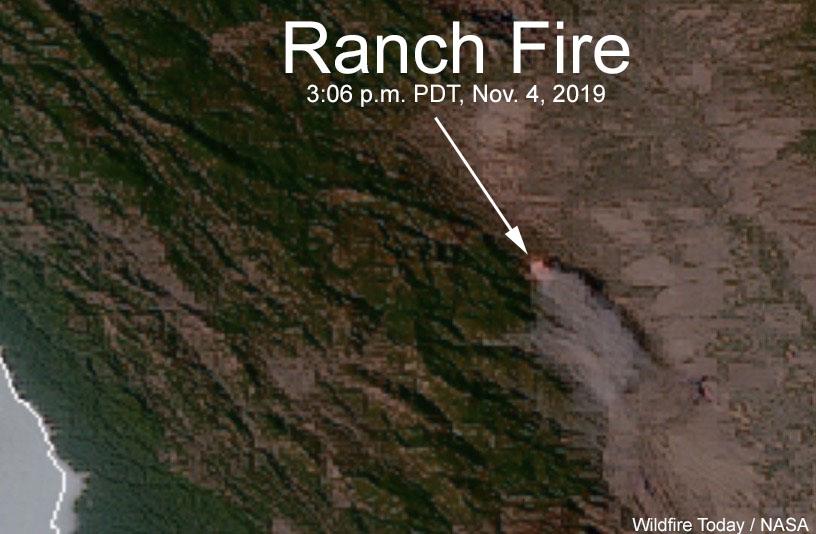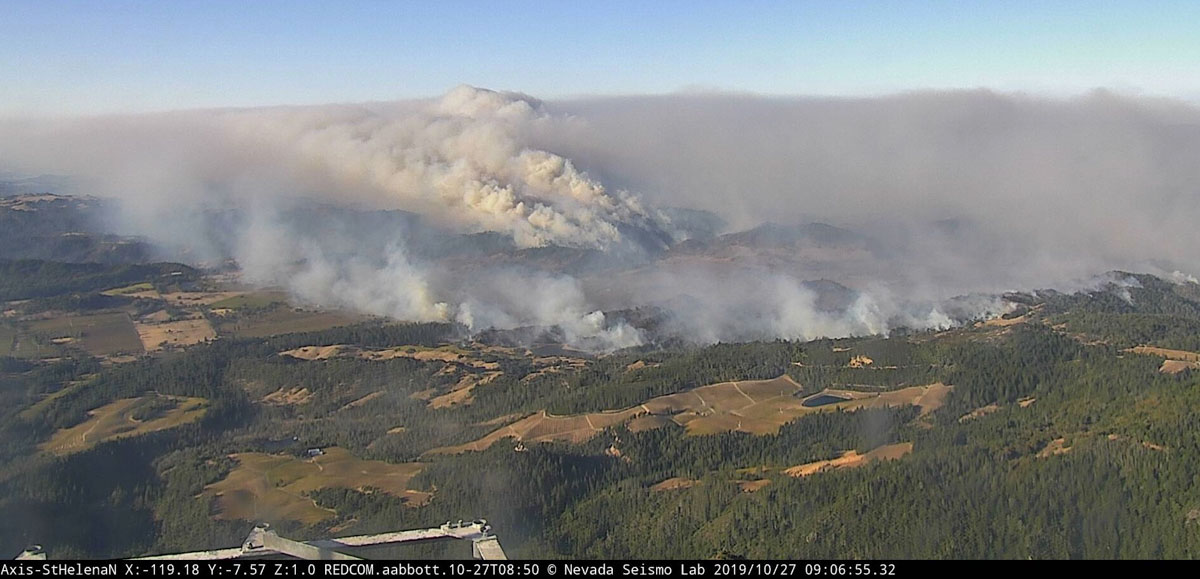Above: Satellite view of the bushfires in New South Wales, Australia. Impressive zoom of the @CopernicusEU#Sentinel3 OLCI instrument. Via @tonyveco, posted on Twitter November 14, 2019 U.S. time.
So far in this fire season in New South Wales (NSW) Australia, which officially runs from October 1 to March 31, six people have lost their lives, four in the last week or so. The NSW Rural Fire Service reports that 259 homes have been destroyed in the state since last Friday, but more than 2,100 in the direct path of the fire were saved.
As of early Friday morning local time, more than 1,300 firefighters are working on 35 uncontained bushfires in NSW, with five being at the Watch and Act alert level. The fire danger in the province is elevated on Friday with winds expected to reach 60 to 75 kph.
Late Wednesday night (U.S. Time) Air Tanker 911, a DC-10, was over the Pacific Ocean on the way to Australia when it had to return to its base in Albuquerque due to a problem with a radio. About 50 minutes after departing from San Bernardino the pilots discovered that the High Frequency radio used on long range international flights was not working, even though it appeared to have passed earlier tests on the ground. There had been no need for the HF radio on T-911 since its last international assignment approximately seven years ago. The radio was repaired by connecting the antenna cable and the new ETA at RAAF Richmond in New South Wales is Saturday morning, local time. (more information at FireAviation.com)
Six people have lost their lives so far this NSW fire season – @RFSCommissioner – @NSWRFS. The fire danger in some parts of NSW is currently at ‘severe.’ https://t.co/Po64RVJsur #NSWfires #7NEWS pic.twitter.com/IA937TmaNL
— 7NEWS Sydney (@7NewsSydney) November 14, 2019
I can’t stop looking at this picture of the boat…https://t.co/GmGZMOTnrs
— Wildfire Today ? (@wildfiretoday) November 13, 2019


